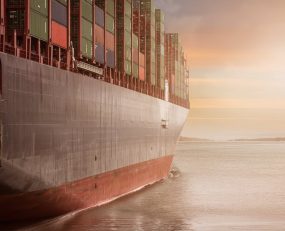
According to Ship and Bunker, the global average VLSFO price has moved above $1,000/mt again on Monday, May 30th 2022 for only the second time in its history, after rising on March 9th 2022, since the new bunker grade emerged three years ago.
In the wake of inflated commodity prices, Maritime operators should be faced with a cost challenge as the share of bunker costs in the running costs of ships range between 30% and 50% for an oil price of 100 US$/barrel.
Oil prices have risen sharply in 2022 as demand grew and the Ukrainian conflict led to sanctions, spurring major economies to move away from Russian oil.
Bunker fuel prices in the Americas region are the most expensive at 795.63 $/mt, up 69.4% annually. The Asia Pacific region has experienced a significant increase, with prices up 86.6% year-on-year (y-o-y). This increased cost is reflected in rates on the transpacific lane which has skyrocketed y-o-y.
In Q1-22, bunker fuel prices in the Asia Pacific region climbed 30.2% over the final three months of 2021. EMEA Bunker fuel prices are up 18.2% quarter-on-quarter in Q1-22. Increases in the costs of bunker fuel are driving up carrier costs and this is being passed on to shippers. With bunker fuel prices up 22.32% in March 2022 alone. While demand and supply are the key determinants for ocean freight prices, fuel can exceed half of the running costs for larger vessels, this higher fuel bill may be passed on to shippers using bunker adjustment factors in 2022.
More recently, according to S&P global, the Singapore marine fuel oil market is expected to maintain record-high levels of prices over the May 30-June 3, 2022 trading week due to supply tightness of low sulphur fuel oil cargoes coupled with firm bunker demand. The current strength in global bunker prices is being led by a surge in Singapore, where supplies have tightened and demand may be set to improve following the reopening of Shanghai. Overall strength in crude oil is also being driven by renewed efforts in the European Union to ban imports of Russian oil following the invasion of Ukraine.
How does this reflect on shipping rates?
Although traditionally it used very cheap bunker fuel, the cost of that fuel has always been a significant feature of the market, so much so that billing is characterized by a ‘Bunker Adjustment Factor’ (BAF), which is attached to any freight bill enabling prices to be increased or decreased with the price of oil. However, maritime shipping rates are not as susceptible to shifts in fuel prices to the extent that is commonly reflected.
Container and ship availability and consumer demand is a more significant cost driver for the price of sea freight .For instance, the increase in freight rates between Q4 2020 and Q4 2021 was not driven largely by fuel prices but the stripping-out of shipping capacity as a result of congestion in the US and in China.
This is not disregarding fuel prices as cost drivers of shipping prices. The pair of fuel prices and ocean freight rates have a stronger dependence on extreme events than other factors. The trend is susceptible to fuel price changes in extreme periods like the financial crisis. That is, in the long-run and short-run, an extreme rise in oil prices is likely to lead to a rise in freight rates. The increases in fuel prices would have to be quite violent for this to happen.
Moreover, container shipping especially is, perhaps surprisingly, not that vulnerable to increases in fuel costs.
Generally, fuel costs are becoming less divisive in shipping costs as the fuel consumption of container ships has fallen by 80% if measured in terms of fuel consumed per container (TEU). This is due to the greater energy efficiencies of larger container vessels. In addition, many carriers practice “slow steaming” on ships. This is the process of reducing speed (often to ~15 knots, rather than ~22 knots) to cut down on fuel consumption. While this cost-mitigation strategy does slow down already exasperated shipping times, it reduces costs for carriers as well as cuts down on their emissions
In conclusion, fuel costs will have to increase even more extremely to counteract any effects of falling or rising supply and demand balance. It is likely that an oil price environment of such violent increases would have major macroeconomic impacts and therefore negatively affect demand levels. Even if that is the case, other externalities and consumer appetite can offset that effect, as is the current case of the recent increase in bunker prices in Singapore, as it might result in an increase of shipping prices, however that will largely be due to a backlog of demand following the prospective re-opening of Shanghai.
Source :Transport Intelligence May 31st 2022
Author: Jenan Hasan